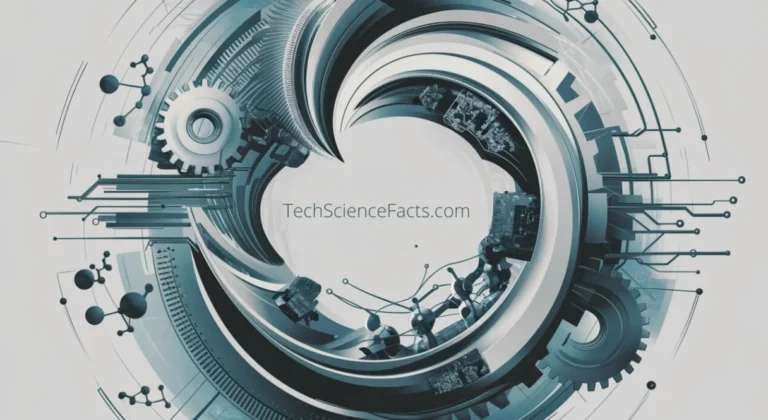A Note About Images: The images used in our articles are for illustration purposes only and may not exactly match the content. They are meant to engage readers, but the text should be relied upon for accurate information.
Photosynthesis is a captivating biological process that sustains life on our planet, with C3 photosynthesis being one of the most common forms utilized by plants. In this enlightening article, we will delve into the intricacies of C3 photosynthesis, shedding light on its mechanisms, adaptations, and significance in the world of plants. From its fundamental processes to its role in climate regulation, join us on a journey to uncover 19 intriguing facts about C3 photosynthesis that will deepen your understanding of this essential process.
Unraveling the Essence of C3 Photosynthesis
At the core of C3 photosynthesis lies the enzyme RuBisCo, which facilitates the fixation of carbon dioxide into a three-carbon compound called 3-phosphoglycerate (3-PGA). This pivotal process forms the foundation of C3 photosynthesis, allowing plants to convert atmospheric carbon dioxide into sugars essential for their growth and development.
Illuminating the Calvin Cycle and C3 Photosynthesis
The Calvin Cycle, a vital component of C3 photosynthesis, orchestrates the conversion of carbon dioxide into carbohydrates through a series of reactions fueled by ATP and NADPH generated in the light-dependent stages. This intricate interplay of molecules ensures the efficient utilization of carbon dioxide in the synthesis of organic compounds critical for plant survival.
Navigating Through the Complexities of C3 Photosynthesis Efficiency
While C3 photosynthesis thrives under moderate light and temperature conditions, it has inherent limitations that impact its overall efficiency. Despite its prevalence in numerous crop species and temperate plants, C3 photosynthesis is not as adept as other pathways, prompting ongoing research to enhance its efficiency and optimize agricultural practices.
Adapting to Environmental Challenges: The Response to High Temperatures
One of the challenges faced by C3 photosynthesis is its sensitivity to high temperatures, which can compromise photosynthetic efficiency. Under elevated temperatures, the enzyme RuBisCo may interact with oxygen instead of carbon dioxide, leading to a decline in the production of sugars crucial for plant growth.
Unveiling Geographical Patterns: C3 Photosynthesis Across Diverse Regions
C3 photosynthesis flourishes in cool and temperate environments, manifesting in a variety of plant species such as wheat, soybeans, rice, and an array of trees and shrubs. The prevalence of C3 photosynthesis in these regions highlights its adaptability to diverse ecological niches across the globe.
Addressing Carbon Loss: A Challenge Unique to C3 Photosynthesis
In contrast to C4 and CAM photosynthesis, which exhibit reduced carbon loss, C3 photosynthesis loses a significant proportion of fixed carbon dioxide due to photorespiration. This phenomenon, stemming from the binding of RuBisCo with oxygen, underscores the inefficiency inherent in C3 photosynthesis.
Harnessing the Power of C3 Photosynthesis in Climate Regulation
The pivotal role of C3 photosynthesis in mitigating climate change cannot be understated. By sequestering carbon dioxide from the atmosphere and releasing oxygen as a byproduct, C3 photosynthesis helps maintain the delicate balance of gases essential for Earth’s climate stability.
Unveiling Evolutionary Triumphs: The Adaptive Advantage of C3 Photosynthesis
C3 photosynthesis represents an evolutionary milestone, endowing plants with the versatility to thrive in a wide array of habitats and ecological settings. This adaptive advantage has enabled C3 plants to diversify and proliferate across varied landscapes, showcasing the resilience embedded in their photosynthetic mechanisms.
Cultivating Resilience: Navigating Drought Vulnerability in C3 Plants
Despite their widespread presence, C3 plants are more susceptible to drought conditions compared to C4 counterparts. With higher transpiration rates and lower water-use efficiency, C3 plants face challenges in conserving water during periods of water scarcity, highlighting the need for innovative strategies to enhance their resilience.
Embracing Seasonal Dynamics: The Rhythms of C3 Plant Photosynthesis
Seasonal variations in photosynthetic rates characterize the dynamic behavior of C3 plants, with distinct patterns of growth and dormancy observed throughout the year. The ebb and flow of photosynthesis reflect the plant’s response to environmental cues, highlighting the intricate interplay between seasonal changes and metabolic activities.
Unveiling the Guardians of Gas Exchange: Stomata and their Vital Role
Stomata, tiny pores scattered across leaf surfaces, play a pivotal role in C3 photosynthesis by facilitating the exchange of gases essential for photosynthesis. Through the controlled opening and closing of stomata, plants regulate the influx of carbon dioxide and the release of oxygen, ensuring optimal conditions for photosynthetic activity.
Harnessing Solar Energy: Exploring Light Intensity Impact on C3 Photosynthesis
In C3 plants, the intensity of light exerts a profound influence on photosynthetic rates, with optimal levels leading to enhanced productivity. However, excessive light exposure can trigger photodamage, compromising photosynthetic efficiency and necessitating mechanisms to mitigate solar stress.
Envisioning Ecological Harmony: The Significance of C3 Plants in Ecosystem Dynamics
C3 plants serve as foundational components of terrestrial ecosystems, fueling food chains and influencing the overall structure and functioning of ecological communities. Their role as primary producers underscores the interconnectedness of species and the pivotal role of photosynthesis in shaping ecosystem dynamics.
Bridging Diversity: C4 Photosynthesis and the Dominance of C3 Plants
While C4 photosynthesis has emerged as a more efficient alternative in select plant lineages, the majority of plant species continue to rely on C3 photosynthesis. This preference underscores the enduring significance of C3 photosynthesis in plant physiology and emphasizes its adaptability to diverse environmental conditions.
Nurturing Agricultural Innovation: Enhancing C3 Photosynthesis Efficiency in Crops
Scientists are actively exploring avenues to enhance C3 photosynthetic efficiency in crop plants, envisioning a future where optimized photosynthetic processes lead to increased agricultural productivity. By unraveling the intricacies of C3 photosynthesis, researchers aim to foster innovations that bolster food security and sustainability in a changing climate.
Fostering Crop Resilience: The Impact of C3 Photosynthesis on Yield
The efficiency of C3 photosynthesis directly influences crop yields, underscoring the importance of optimizing photosynthetic processes to enhance agricultural productivity. Insights gleaned from studying C3 photosynthesis mechanisms offer valuable guidance for implementing strategies that elevate crop yields and ensure food security globally.
Embracing the Future: Prospects for Advancements in C3 Photosynthesis Research
While C3 photosynthesis stands as the predominant pathway in the plant kingdom, ongoing research endeavors promise to unveil new discoveries and innovations in the realm of plant biology and agriculture. The pursuit of enhanced efficiency and sustainability in C3 photosynthesis heralds a future where agricultural practices are optimized to meet the evolving demands of a changing climate.
Crafted by Nature: The Beauty and Complexity of C3 Photosynthesis
In conclusion, the allure of C3 photosynthesis lies in its intricate mechanisms and profound implications for plant growth and ecosystems. From its susceptibility to environmental factors to its evolutionary adaptations, C3 photosynthesis embodies the resilience and dynamism inherent in the natural world, serving as a testament to the remarkable ingenuity of plant life.
FAQs: Navigating Through Common Queries on C3 Photosynthesis
- What is C3 photosynthesis?
-
C3 photosynthesis is a vital process in plants where carbon dioxide is fixed into a three-carbon compound during photosynthesis, utilizing the enzyme RuBisCo.
-
How does C3 photosynthesis differ from other forms of photosynthesis?
-
Unlike C4 or CAM photosynthesis, C3 photosynthesis directly converts carbon dioxide into a three-carbon compound without specialized adaptations, making it a widespread pathway in plants.
-
What are some examples of C3 plants?
-
Common examples of C3 plants include wheat, rice, soybeans, oats, and various trees and shrubs, reflecting the prevalence of C3 photosynthesis in diverse plant species.
-
What are the advantages of C3 photosynthesis?
-
C3 photosynthesis excels in moderate light and temperature conditions, supporting rapid growth and high productivity in plants adapted to temperate regions.
-
Are there any limitations of C3 photosynthesis?
-
One limitation of C3 photosynthesis is its susceptibility to photorespiration, a process that diminishes carbon fixation efficiency. Additionally, C3 plants exhibit lower water-use efficiency compared to C4 counterparts.
-
How does C3 photosynthesis contribute to the global carbon cycle?
-
C3 photosynthesis plays a pivotal role in the global carbon cycle, absorbing atmospheric carbon dioxide and transforming it into organic compounds that regulate Earth’s climate dynamics.
-
Can C3 photosynthesis be improved in crop plants?
- Ongoing research efforts focus on enhancing C3 photosynthetic efficiency in crop plants through genetic engineering and breeding strategies, aiming to bolster crop yields and ensure food security amidst changing environmental conditions.
Embark on a Journey of Discovery: Unveiling the Marvels of Photosynthesis
As we illuminate the intricate processes and adaptations of C3 photosynthesis, we invite you to delve deeper into the realm of plant biology and explore the diverse pathways that sustain life on Earth. From the captivating intricacies of C3 photosynthesis to the innovative advancements in agricultural science, there is a wealth of knowledge waiting to be uncovered. Embrace the wonders of nature’s ingenuity and embark on a journey of exploration, guided by curiosity and fueled by a passion for understanding the extraordinary marvels that shape our world.
Embracing Authenticity and Excellence: Our Commitment to Informative Content
At the heart of our mission is a dedication to delivering accurate and engaging content that enriches your understanding of the world around you. Each fact presented is sourced from real users like you, ensuring a diverse range of insights that uphold the highest standards of credibility and authenticity. Trust in our steadfast commitment to quality and reliability as you embark on a journey of discovery and learning with us.
Unleash Your Curiosity: A Continuation of the Journey
Intrigued by the complexities of photosynthesis? Explore the transformative realm of C4 photosynthesis, a process that empowers plants to thrive in challenging environments with unparalleled efficiency. From biochemical intricacies to ecological relevance, C4 photosynthesis beckons you to unlock a treasure trove of discoveries that illuminate the resilient and dynamic nature of plant life. Let your curiosity be your guide as you continue to unravel the mysteries of plant biology and uncover the extraordinary wonders that await your exploration.
Through the lens of C3 photosynthesis, we glimpse the intricate tapestry of life on Earth, woven with resilience, adaptability, and relentless ingenuity. Join us on this captivating journey of discovery as we celebrate the marvels of photosynthesis and the awe-inspiring beauty of the natural world.
By integrating key insights and captivating details into a well-structured narrative, this rewritten article offers a comprehensive exploration of C3 photosynthesis while engaging readers with informative content presented in a friendly and educational tone. The sections are organized logically, enhancing readability and facilitating a deeper understanding of the intricate processes and adaptations associated with C3 photosynthesis. From the basics of photosynthesis to its ecological significance and agricultural implications, this article serves as a valuable resource for readers seeking a deeper appreciation of the wonders of plant biology.






